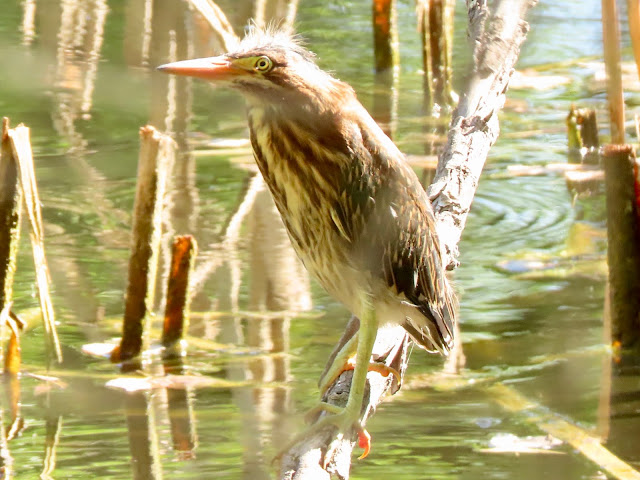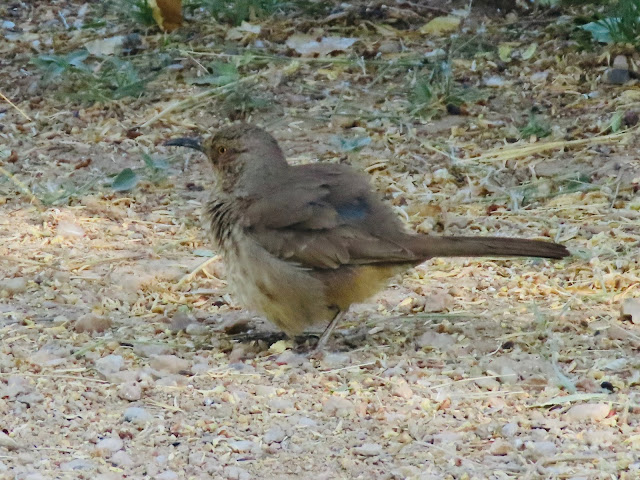Saturday, June 27, 2020
Although many rare birds have shown up in Arizona this year, it has been my choice to skip running to various places around the state to see them. With Covid-19 cases in Arizona still ongoing, it didn’t make sense to me to even chase the only Life Bird that showed up (Eared Quetzal) in Eastern Arizona’s Chiricahua Mountains. I’ll see it later, hopefully, in its traditional territory of Central America….without being among hordes of birders/photographers homing in on one bird out in nature.
That decision held until a rare STREAK-BACKED ORIOLE from Mexico decided to build its nest at Hassayampa River Preserve in Wickenburg, Arizona, less than 100 miles from home. It wasn’t a Life Bird, but I’ve been itching to get up there and had yet to do it.
The River Preserve is on 770 acres of land that has been occupied since the 1860s, serving at different times as a stagecoach way-station and a dude ranch. Because of its ecological and cultural value, it was purchased in 1986 by The Nature Conservancy (TNC). Only recently, in 2017, did the TNC donate the property as a conservation easement to Maricopa Parks and Recreation Department to manage. That Department has already proved itself in the management of other critical areas such as Spur Cross Ranch in Cave Creek and Morgan City Wash at Lake Pleasant.
The word, Hassayampa, appears to be what early settlers picked up from the indigenous Yavapai calling it: “Hasyambo, meaning the water that disappears.”
The Apaches referred to it simply as “upside down river” because most of its 100-mile waters run underground through the desert with only intermittent above-ground flows. But, the magic of the Preserve is that the Hassayampa River emerges there and runs above-ground throughout the year.
In my opinion, the Preserve is still one of the “wild” places we can visit without feeling the encroachment of management. Within its three (3) miles of trails, mostly dirt and dust, it’s very easy to spend a full day birding throughout the trail system.
Friend, Jannie B., joined me for this visit with camera in hand. I discovered she had a good eye for birds, too. Hearing that many birders were already present at the controlled rare bird site, we decided to bird our way to the farthest barrier taking the trail past Palm Lake.
 |
| SONG SPARROW walking the trail ahead of us |
At the the spring-fed Lake, Jannie was first to spot the young GREEN HERON, with fuzz still on its head, perched perfectly still on a rotting log just above the water line at Palm Lake, staring at the water beyond it.
 |
| Young GREEN HERON. (Babs photo above; Jannie's photo below) |
We were hearing and seeing lots of birds but many were hidden behind large cottonwood leaves or hanging willow leaves.
At the far end of Palm Lake, we took the trail to the Mesquite Meander where we soon came upon several other birders sitting/standing in order to catch sight of the rare STREAK-BACKED ORIOLE flying into her nest carrying interior decorating softness.
We joined seven birders behind the yellow tape crossing the trail from where we could see an even larger group on the other side of the nest behind their taped barrier. On both sides we were watching the nest hanging out over the trail, staying alert to each bird in the area, waiting....waiting....for the rarity to show itself. Some had already seen the bird but said it was intermittent and stayed out for quite a while before returning.
 |
| Streak-backed Oriole nest, hanging over Mesquite Meander Trail |
I was delighted that each of the birders was wearing a protective mask that does not happen everywhere I bird. If I respect you by wearing a mask, then, thank you, for doing the same.
Ah, here's the bird!! Click, click, click. Oriole is gone. Did I get it????
 |
| Female STREAK-BACKED ORIOLE |
So, I barely got a photo, but as I mentioned this is not a Life Bird. My first sighting was out in Yuma in 2016 when a male was present in Riverside Park. (below)
 |
| Male STREAK-BACKED ORIOLE, Riverside Park,Yuma 2016. (above & below) |
While other birders continued to hang out and wait for the male to show up, Jannie and I took off to continue birding the other side of Palm Lake before heading to the River Ramble. There we came upon Eric Hough, a birder I knew from years past and who got the job as Manager of the Preserve for Maricopa County Parks & Recreation. We walked with him for a while before he had to check on some folks who had gone off trail.
Eating lunch under the trees by the entrance later, we checked out the hummingbird and seed feeders to add more birds to our list. Best bird there was the HOODED ORIOLE who was feeding on the juicy red fruit of a saguaro.
 |
| Male HOODED ORIOLE |
We wrapped up there by 11:00 a.m. (they open at 7 a.m.) and headed for home. Quickest route for us, even though we live in the East Valley of Phoenix is to take the 202 to I-10 West to the 303 North to Rt. 60 right to the Preserve about 5 miles before reaching Wickenburg. (left side of road a couple miles past the highway rest area)
The 73°F temperature at start time (7:35) had climbed to 97° so even this wonderful oasis in the Sonoran Desert was letting us know it was time to head out.
Another wonderful day in the wilderness.
You may view our list of 37 species by clicking on the link below.
* * *
View this checklist online at https://ebird.org/checklist/S70887667




















































